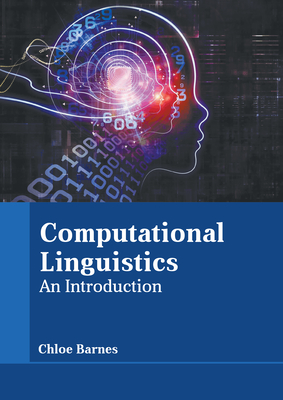Conversational AI: Dialogue Systems, Conversational Agents, and Chatbots by Michael McTear
IF 5.3
2区 计算机科学
Q2 COMPUTER SCIENCE, ARTIFICIAL INTELLIGENCE
引用次数: 1
Abstract
This book has appeared in the series Synthesis Lectures on Human Language Technologies: monographs from 50 up to 150 pages about specific topics subjects in computational linguistics. The intended audience of the book are researchers and graduate students in NLP, AI, and related fields. I define myself as a computational linguist; my review is from a perspective of a “random” computational linguistics researcher wanting to learn more about this topic or looking for a good guide to teach a course on dialogue systems. I found the book very easy to read and interesting and therefore I believe that McTear fully achieved his purpose to write “a readable introduction to the various concepts, issues and technologies of Conversational AI.” He succeeds remarkably well in staying on the right level of technical details, never losing the purpose of giving an overview, and the reader does not get lost in numerous details about specific algorithms. Additionally, for people who are experts in Conversational AI, the book could still be very useful because its bibliography is exceptionally complete: a very large number of early works and recent studies are cited and commented through the whole book. The book is well structured into six chapters. After an introduction, there are two chapters about specific types of dialogue systems: rule-based systems (Chapter 2) and statistical systems (Chapter 3). This is followed by a chapter about evaluation methods (Chapter 4), after which the more recent neural end-to-end systems are reviewed (Chapter 5). The book ends with a chapter on various challenges and future directions for the research on Conversational AI (Chapter 6). I found that it was meaningful to distinguish the three types of dialogue systems: rule-based systems, statistical but modular systems, and end-to-end neural systems. It might, at first, seem strange that the topic on system evaluation methods is placed between the chapter about modular statistical dialogue systems and neural end-to-end systems, but as a reader, I believe that the discussion about system evaluation comes around at the right place in the book, because it helps to better understand the difference between modular and sequence to sequence systems. In this review, I will discuss the chapters one by one in the same order as they appear in the book.对话人工智能:对话系统、对话代理和聊天机器人
这本书出现在《人类语言技术综合讲座》系列中:50到150页的关于计算语言学特定主题的专著。这本书的目标读者是NLP、人工智能和相关领域的研究人员和研究生。我把自己定义为一个计算语言学家;我的评论是从一个“随机”计算语言学研究人员的角度出发的,他想了解更多关于这个主题的信息,或者寻找一个很好的指导来教授对话系统课程。我觉得这本书读起来很容易,也很有趣,因此我相信McTear完全达到了他的目的,写了一本“对话人工智能的各种概念、问题和技术的可读介绍”。他非常成功地保持了正确的技术细节水平,从未失去概述的目的,并且读者不会迷失在关于特定算法的许多细节中。此外,对于会话人工智能专家来说,这本书仍然非常有用,因为它的参考书目非常完整:整本书都引用和评论了大量早期作品和最近的研究。这本书分为六章。在介绍之后,关于具体类型的对话系统分为两章:基于规则的系统(第2章)和统计系统(第3章)。接下来是关于评估方法的一章(第4章),之后回顾了最近的神经端到端系统(第5章)。本书最后一章介绍了会话人工智能研究的各种挑战和未来方向(第6章)。我发现区分三种类型的对话系统是有意义的:基于规则的系统、统计但模块化的系统和端到端的神经系统。起初,关于系统评估方法的话题被放在关于模块化统计对话系统和神经端到端系统的章节之间,这可能看起来很奇怪,但作为一名读者,我相信关于系统评估的讨论在书中的正确位置,因为它有助于更好地理解模块化系统和序列到序列系统之间的区别。在这篇综述中,我将按照书中出现的顺序逐一讨论这些章节。
本文章由计算机程序翻译,如有差异,请以英文原文为准。
求助全文
约1分钟内获得全文
求助全文
来源期刊

Computational Linguistics
工程技术-计算机:跨学科应用
CiteScore
15.80
自引率
0.00%
发文量
45
审稿时长
>12 weeks
期刊介绍:
Computational Linguistics, the longest-running publication dedicated solely to the computational and mathematical aspects of language and the design of natural language processing systems, provides university and industry linguists, computational linguists, AI and machine learning researchers, cognitive scientists, speech specialists, and philosophers with the latest insights into the computational aspects of language research.
 求助内容:
求助内容: 应助结果提醒方式:
应助结果提醒方式:


